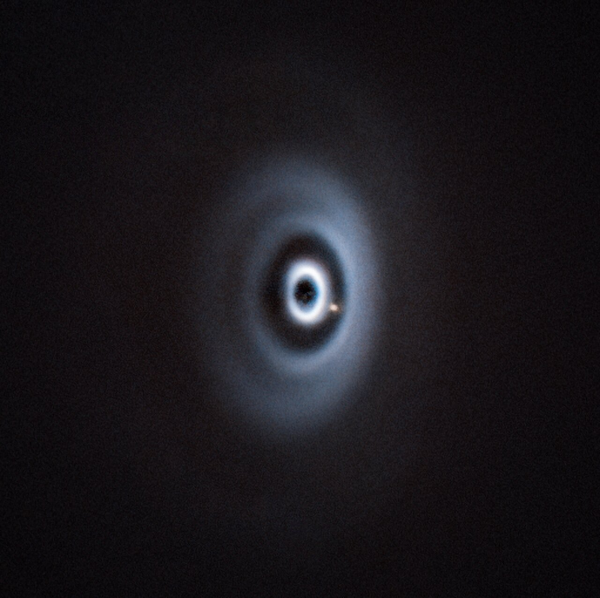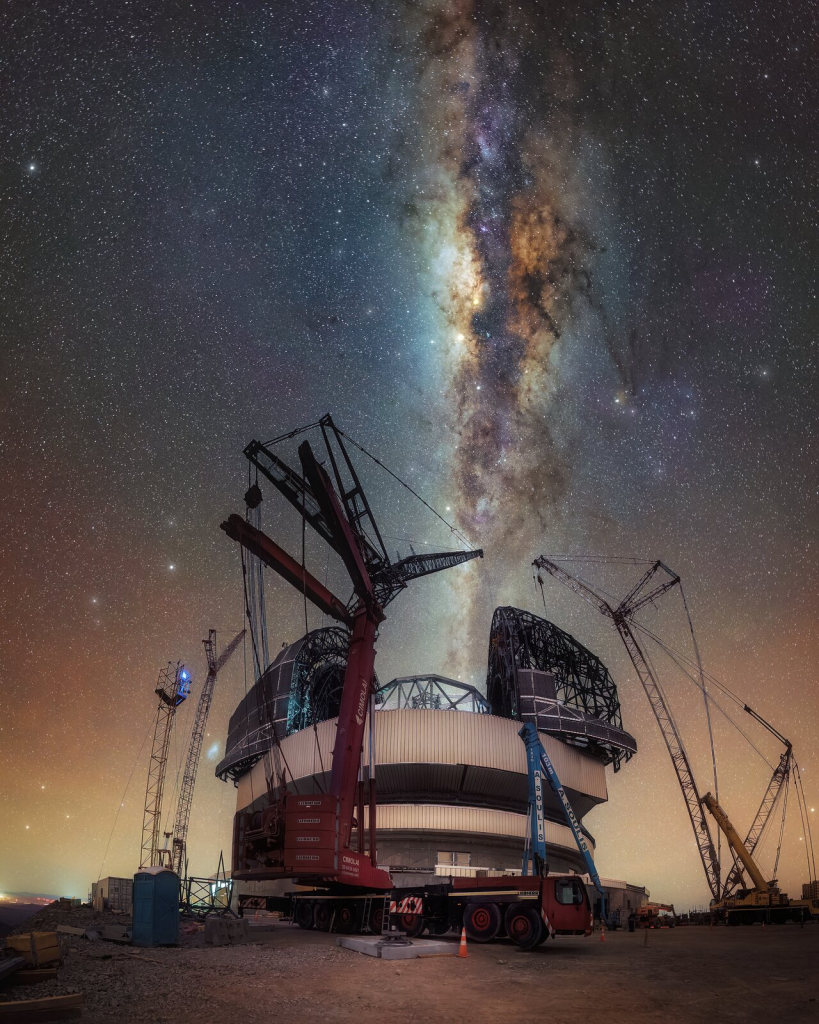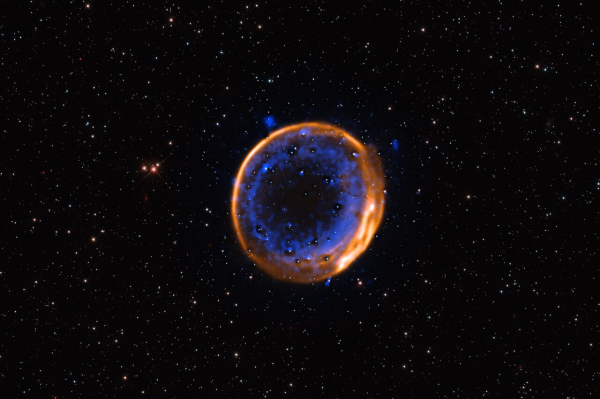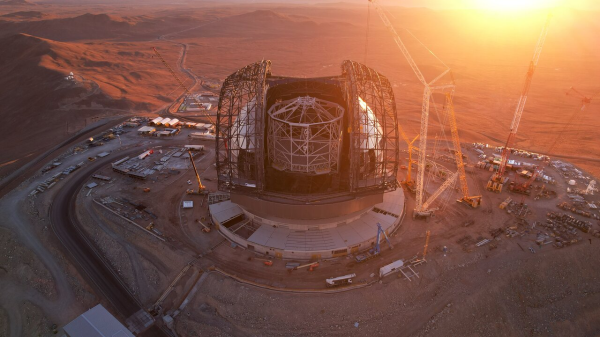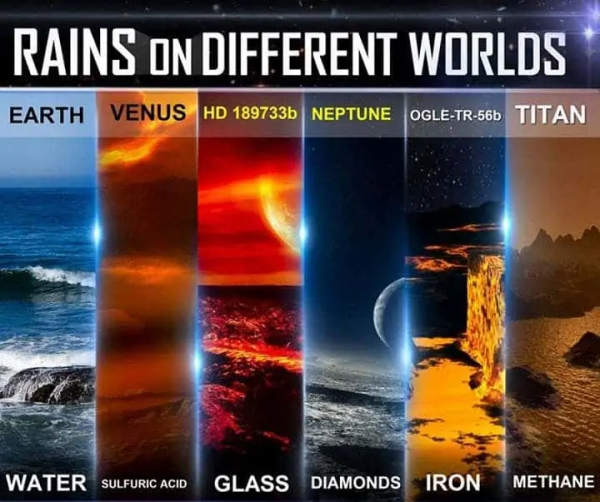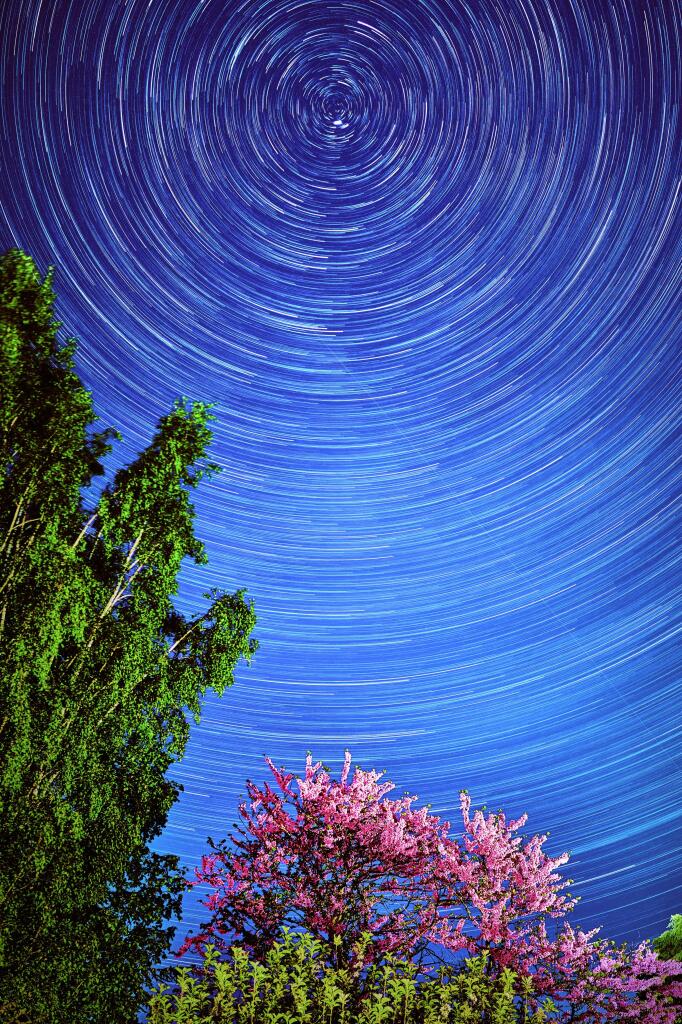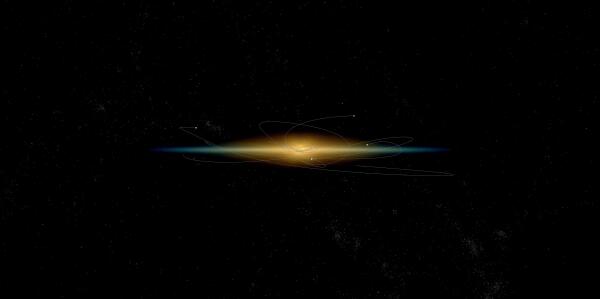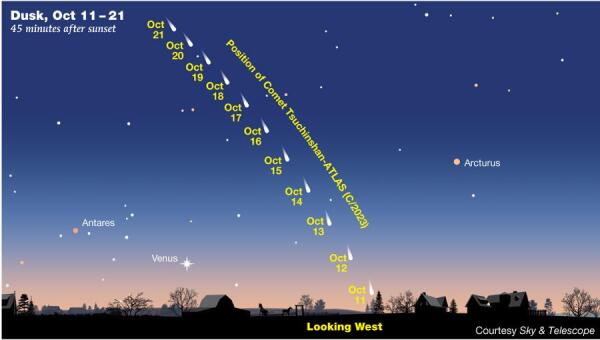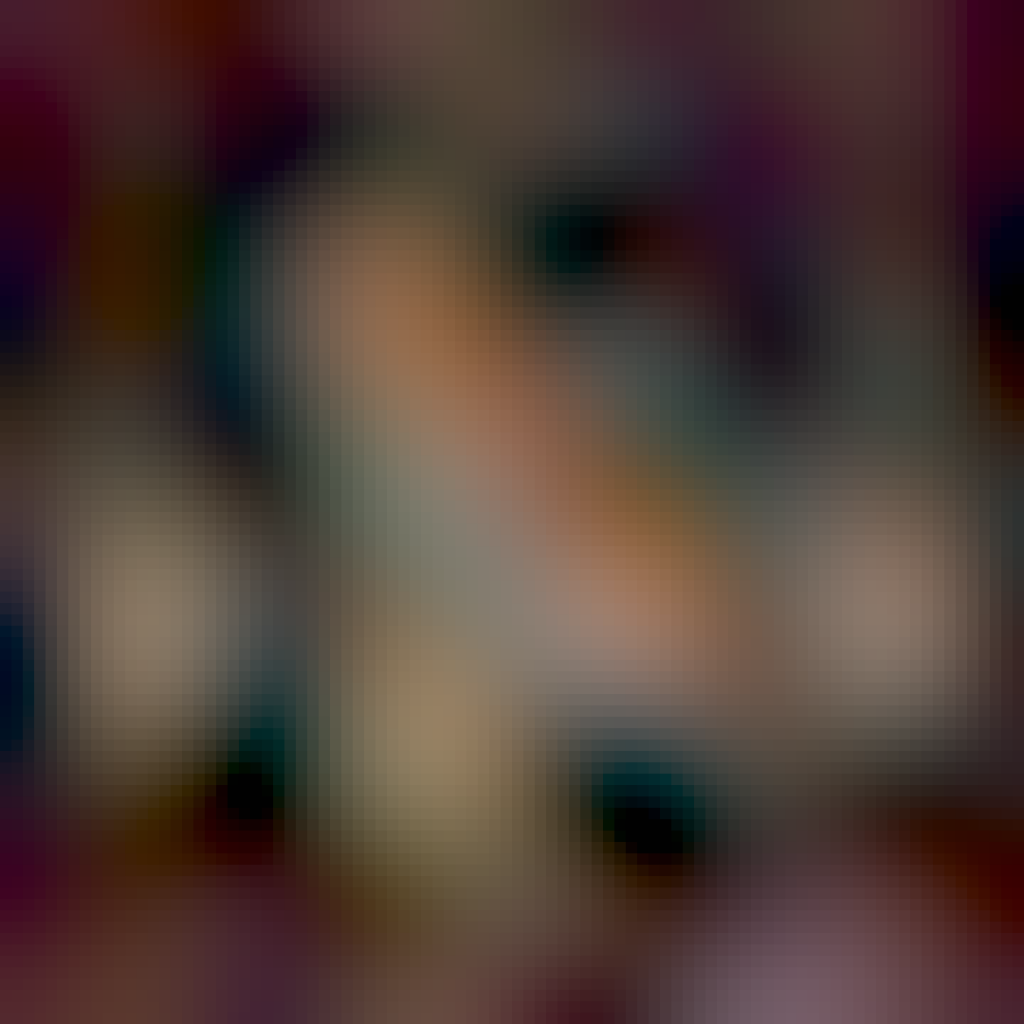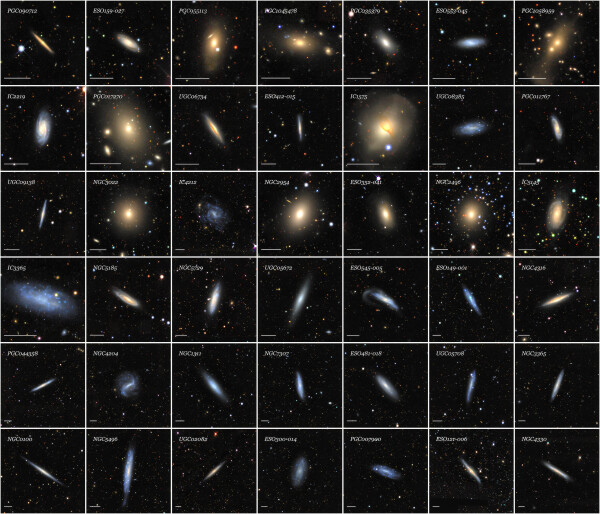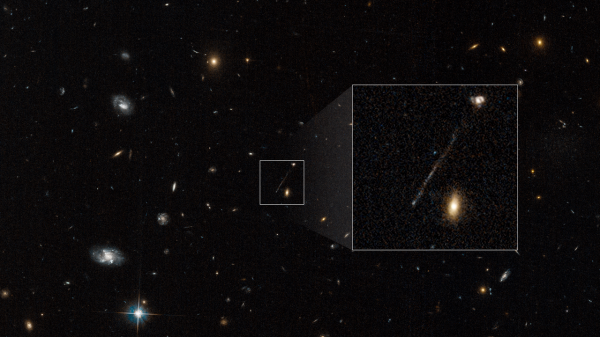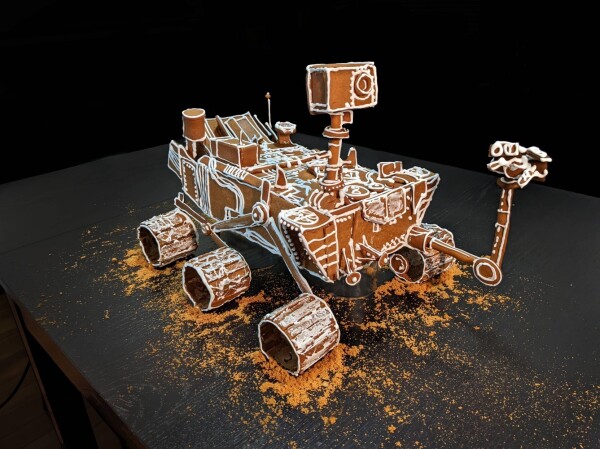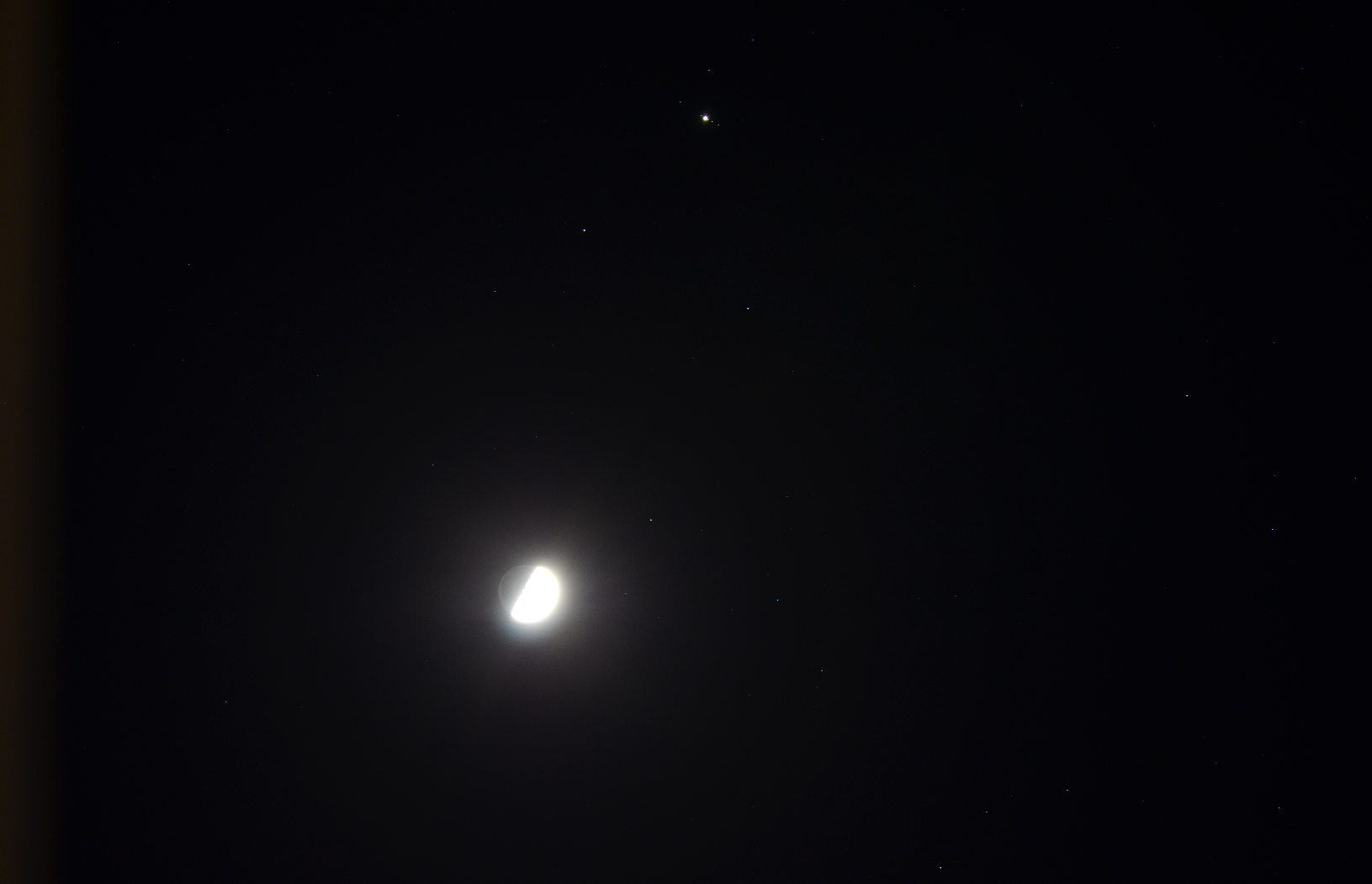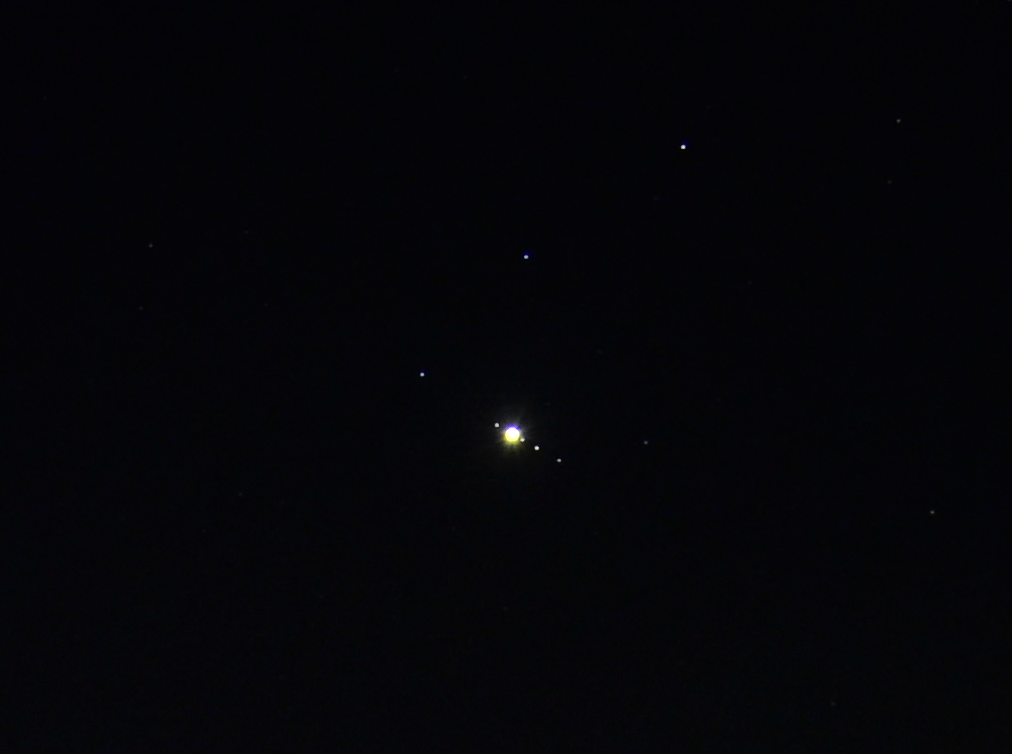Search
Items tagged with: Astronomy
A very hungry planet! 🪐
That little dot is WISPIT 2b, a newborn exoplanet. About 5 times the mass of Jupiter, the planet is eating its way through its dusty cradle as it orbits the host star, a younger version of our Sun 🌞
Taken with ESO’s Very Large Telescope (VLT) in #Chile, this image is the first clear detection of a baby planet in a disc with multiple rings.
Read more: https://www.eso.org/public/images/potw2534a/
📷 ESO/R. F. van Capelleveen et al.
As the Milky Way band appears to pour into our Extremely Large Telescope in #Chile, the cranes around it seem to do the same while they further advance the telescope.
Once complete, the ELT will be breaking down the light above in unparalleled detail with its huge 39 m mirror.
More: https://www.eso.org/public/images/potw2533a/
📷 C. Letelier/ESO
#astrodon #astronomy #astrophysics #astrophotography #space #science
Sailing beneath a sea of stars!
Feast your eyes on this stunning image of our Extremely Large Telescope (ELT) underneath a gorgeous starry night sky in #Chile. It almost looks like a ship cresting a great, shadowy wave. ⛵️🌊
Read more: https://www.eso.org/public/images/potw2530a/
📷 P. Romaniuk/ESO
💥💥 Double detonation!
For the first time, astronomers have obtained visual evidence that a star met its end by blasting twice.
This was done by studying the centuries-old remains of supernova SNR 0509-67.5 with our Very Large Telescope. Led by the Univ. of South Wales, this shows some of the most important explosions in the Universe in a new light.
What happened exactly? Keep reading.
#astrodon #astronomy #astrophysics #space #science
📷 ESO/P. Das et al. Backgr. stars (HST): K. Noll et al.
New instance, new #introduction !
Hi #fediverse ! We’re the European Southern Observatory, and we design, build and operate ground-based telescopes.
One of them is our Extremely Large Telescope, currently under construction in #Chile. It will have a 39 m mirror, and its rotating enclosure will weigh 6100 tonnes, or about 700 mastodons!
We’re looking forward to chatting with all of you about #astronomy
And many thanks to @sebinthestars for running our former instance!
📷 ESO/G. Vecchia
Grateful that it's only #raining water in my neighborhood today 😂
📷 /more on "rain" on other planets: https://www.zmescience.com/feature-post/space-astronomy/exoplanets/rain-titan-earth-neptune/
#space #science #weather #astronomy #astroDon #rain #storms #Earth
How it rains on different planets: what the science says
It rains water on Earth, but on Titan, it rains with methane. Find out how it rains on other planets.Mihai Andrei (ZME Science)
Canon EOS R7 + RF 28mm F2.8 STM.
28mm, f2.8, 10 exposures of 600’’.
#canon #canoneosr7 #eosr7 #astro #astrophoto #astrophotos #astrophotography #astrophotographer #spacephotography #astronomy #spaceexploration #nasa #universe #space #deepsky #deepspace #star #stars #startrail #startrails
The skies of Chile’s Atacama Desert, renowned as the darkest and clearest of the world, are now at risk from an industrial megaproject.
Electricity company AES Andes proposed to locate a large-scale industrial complex just a few kilometres away from our Paranal Observatory. If constructed, the resulting dust emissions, increased atmospheric turbulence, and especially light #pollution, would irreparably impact the capabilities for astronomical observation.
We urge the involved parties, specifically AES Andes, to work with the Government of #Chile to relocate this megaproject to a zone compatible with industrial development without jeopardising the skies of Paranal.
Read more: https://www.eso.org/public/news/eso2501/?lang
📷 ESO/P. Horálek
#environment #astrodon #astronomy #science
World's darkest and clearest skies at risk from industrial megaproject
On December 24th, AES Andes, a subsidiary of the US power company AES Corporation, submitted a project for a massive industrial complex for environmental impact assessment.www.eso.org
German astronomer Maria Kirch died #OTD in 1720.
She was one of the first famous astronomers of her period due to her writing on the conjunction of the sun with Saturn, Venus, and Jupiter in 1709 and 1712 respectively. Kirch observed a comet in 1702, becoming the first woman to make such a discovery. However, the discovery was officially credited to her husband, reflecting the gender biases of the time.
New views of our home #galaxy ✨ An innovative method decodes the complex structure of our #milkyway .
https://www.aip.de/en/news/unveiling-the-uncharted-milky-way/
Unveiling the Uncharted Milky Way: Completing the Galactic Stellar Map
By peering into the cosmic dance of stars, a team led by researchers from the Leibniz Institute for Astrophysics Potsdam (AIP) has unravelled the complex structure of our Milky Way galaxy. Assuming thwww.aip.de
I feel like we could all use some good news right now, so here you go: Bright comet Tsuchinshan-ATLAS will become visible in the evening sky starting tomorrow night.
Clear view to the west essential. Sharp eyes highly recommended. Pointers at the link.
https://skyandtelescope.org/press-releases/bright-comet-evening-view/ #space #science #astronomy #nature #photography
What is "normal" anyway?
Astronomers have found multi-planet systems around a number of nearby stars, but none that's much like our own. They're not a lot like each other, either.
We still don't know what a normal planetary system looks like, or if there even is such a thing.
https://astrobiology.com/2024/01/unraveling-the-mysteries-of-planet-formation-and-evolution-in-a-distant-solar-system.html #science #nature #astronomy
Unraveling The Mysteries Of Planet Formation And Evolution In A Distant Solar System - Astrobiology
A recently discovered solar system with six confirmed exoplanets and a possible seventh is boosting astronomers’ knowledge of planet formation and evolution.Keith Cowing (Astrobiology)
The Siena Galaxy Atlas contains the most precise overview of galaxies in the nearby universe: 380,000 of them, each one as vast and storied as our own Milky Way. https://noirlab.edu/public/news/noirlab2328/
#space #science #astronomy
New Siena Galaxy Atlas Delivers Improved Measurements of Almost 400,000 Nearby Galaxies - The unprecedented digital atlas includes data from NOIRLab telescopes and will be an invaluable resource for research into galaxy formation and the structure of the
Astronomers have created a detailed atlas of almost 400,000 galaxies in our cosmic neighborhood. The Siena Galaxy Atlas was compiled using data from NSF's NOIRLab telescopes, and is designed to be the pre-eminent digital galaxy atlas for large galaxi…www.noirlab.edu
Credit: NASA, ESA, and F. Summers
Source: https://svs.gsfc.nasa.gov/30686
#Astronomy #Space #Universe #AltText4Me
This streak on a Hubble photo, originally thought to be an imaging glitch, is actually a 200,000 light year trail of new stars formed by the wake of a black hole that was ejected from the galaxy at the top right.
For reference, that streak is about twice the diameter of the Milky Way!
More details: https://hubblesite.org/contents/media/images/2023/010/01GWQ1F36Y4JK6Y4K8AWMZ86AF?news=true
#hubble #blackhole #astronomy
This seminal breakthrough led to the creation of a whole new field of astronomy, as her once-startling theory became an accepted part of the still-evolving story of the universe.
Favored to win the Nobel Prize for years, she died in 2016 without ever receiving a call from Stockholm.
#Astronomy
https://skyandtelescope.org/astronomy-news/vera-rubin-mother-of-dark-matter-dies-at-88/
photo: Carnegie Institute
@royalastrosoc
I see this all too often -- major public/nonprofit organizations set up shop here, but don't know how to best cross-link/promote it, so the accounts get kind of lost. If you care about #astronomy & like their work, give them a boost or follow 😀
The light from these galaxies has taken more than 13.4 billion years to reach us implying they existed 400 million years after the big bang, when the #universe was only 2% of its current age.
These galaxies are extremely faint because of their great distance from us. Astronomers can now explore their properties, thanks to JWST's exquisite sensitivity.
#astronomy #cosmology
https://phys.org/news/2022-12-nasa-webb-milestone-quest-distant.html
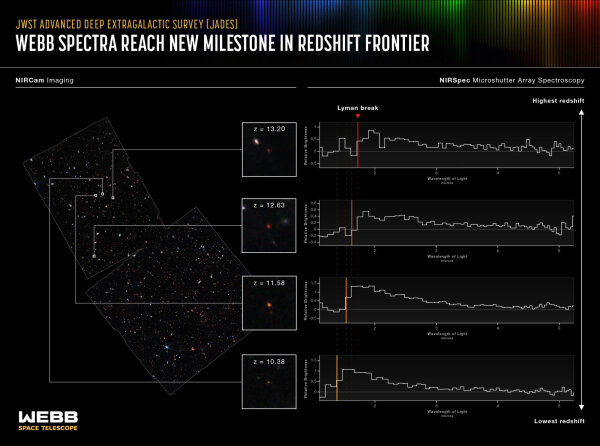
NASA's Webb reaches new milestone in quest for distant galaxies
An international team of astronomers has used data from NASA's James Webb Space Telescope to report the discovery of the earliest galaxies confirmed to date. The light from these galaxies has taken more than 13.Science X staff (Phys.org)
And I am speeding through the galaxy arm right now at about 500 ly/s. 😁 (That's about 10^10 c.)
Celestia: Home
Celestia is a free space simulator for Windows, Linux, macOS, iOS and Android. You can freely explore space in three dimensions. The program displays objects and orbits based on scientific data.celestia.space
